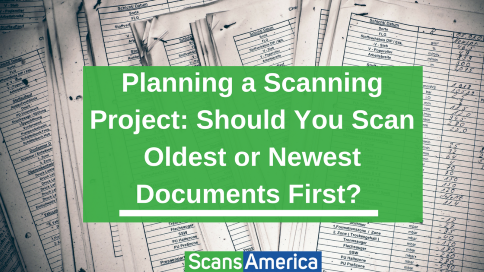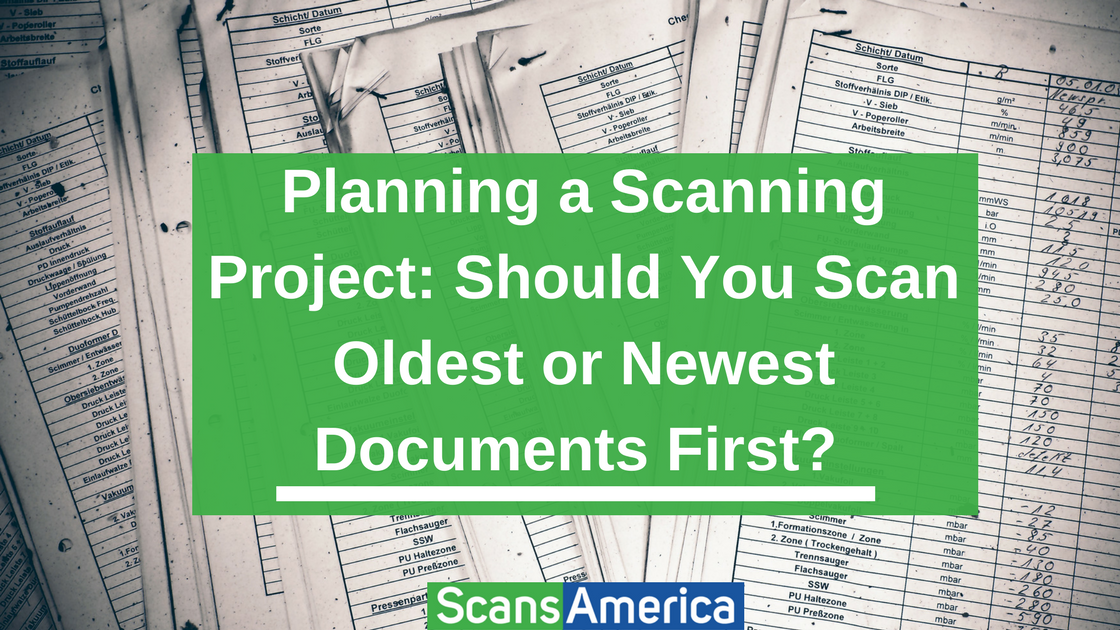
With stacks of papers and filing cabinets full of documents in your office, it might be intimidating to think of where to begin. But instead of throwing random materials into a scanner and hoping for the best, it's ideal to have a document scanning project plan. And while you may be able to perform the tasks on your own time, outsourcing to the professionals at ScansAmerica will ensure more experience, security, efficiency and premium access to technology.
Tips for Starting a Document Scanning Project
Having a document scanning project may require a lot of effort, but it will pay off in the long-run. As opposed to throwing papers in a scanner haphazardly, think about whether you are archiving or using the data on a daily basis. You will also want to consider state laws and corporate guidelines pertaining to your company to make sure it's compliant with various regulations. Transforming your business into a paperless system makes electronic records easy to store, share, find and back up. It also reduces storage costs and maintenance.
Here are a few quick tips when planning out your scanning project:
- Shred anything you don't need as many businesses don't scan every single item they have.
- Prioritize what you use the most and which papers will provide the most significant benefit from digitization.
- Determine how many boxes you need to be scanned instead of individual documents because it's easier to estimate the cost per box.
- Decide on the format you want for your scanned files.
- Prepare documents by removing staples and bindings for a hassle-free process.
- Tape odd-sized papers to standard forms.
- Index your information by file type, name and pages for optimal organization.
- Create a post-scan plan.
What Is the Best Order for Bulk Document Scanning Projects?
Whether to scan historical or new documents first is often up to the individual manager of data for each company. However, many people opt to implement a day-forward scanning date. It's where you scan everything after a specific time first, then examine anything older when accessible. The process allows you to get what you need first and then will enable you to convert older and less vital pieces on an as-needed basis.
The most common format is a PDF because it's easy to share and protect while others include Raw Image File and Tagged Image File Format. Preparing your documents also involves handling pictures and colored documents separately. You will also want to know if you legally have to save and store originals. If there are no regulations for your company, you can opt to destroy any documents for more office space and decreased storage costs.
The best way to make a post-scanning plan is to use a document management system to store your data. It makes it simple for you and your employees to find and manage important info from any location. Designed to categorize your documents, an electronic document management system makes indexing, sharing, searching and securing easier. You can choose to store it on a cloud-based system or on-site at your office.
ScansAmerica Can Streamline Your Company
In-house vs. outsourcing options comes down to personal preference, but relying on the professionals guarantees efficient and secure results so you can focus on other business-related tasks. ScansAmerica offers you an incredible experience as we use a 12-step process. We travel to you and pick up all your materials. Our pricing is also by box rather than by the document to give you cost-effective solutions.
To learn more about our scanning services and solutions, contact us for a quote or if you have questions.

